With over 130 species, the genus Hyphessobrycon has become very confusing. New species are still being discovered. It has long been known that Hyphessobrycon is an artificial collective genus and that the species in it are not necessarily closely related to each other. For this reason, “groups” have been defined within Hyphessobrycon from time to time since the 1970s in order to better structure them. One of these groups is that of the flag tetras, the so-called Hyphessobrycon heterorhabdus group. It is characterized by the fact that three different coloured longitudinal bands can be seen in life, namely one red, one black and one white. However, depending on the assessment of the respective researchers, other characteristics are also used to differentiate between groups, such as the presence or absence of spots in the shoulder area ( = humeral spots) or on the tail root.
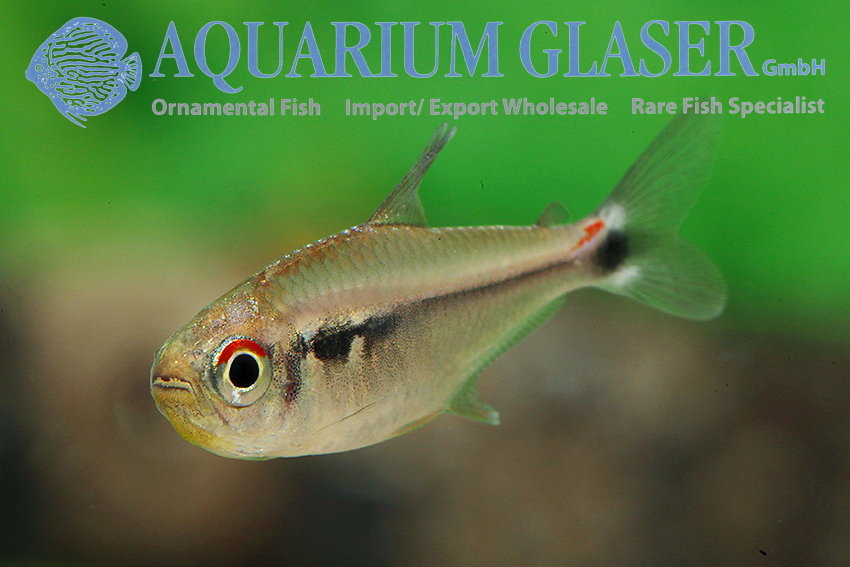
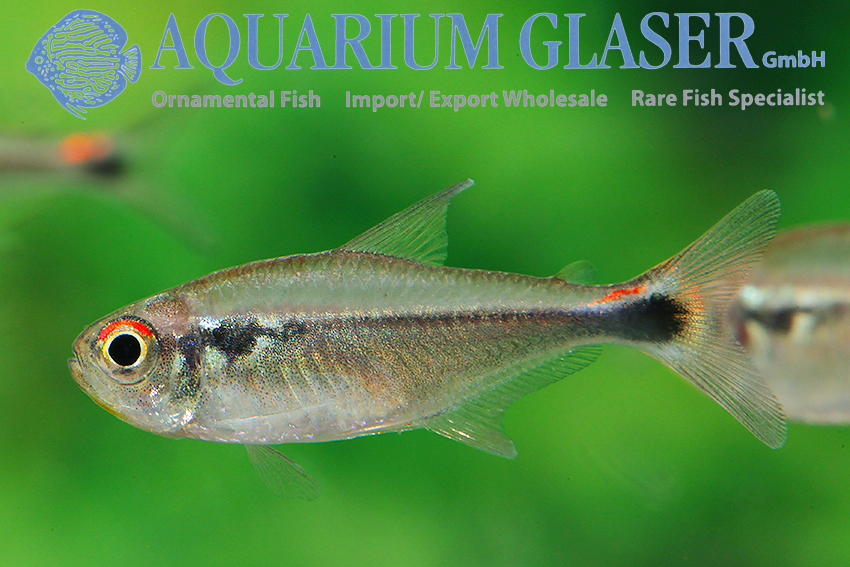
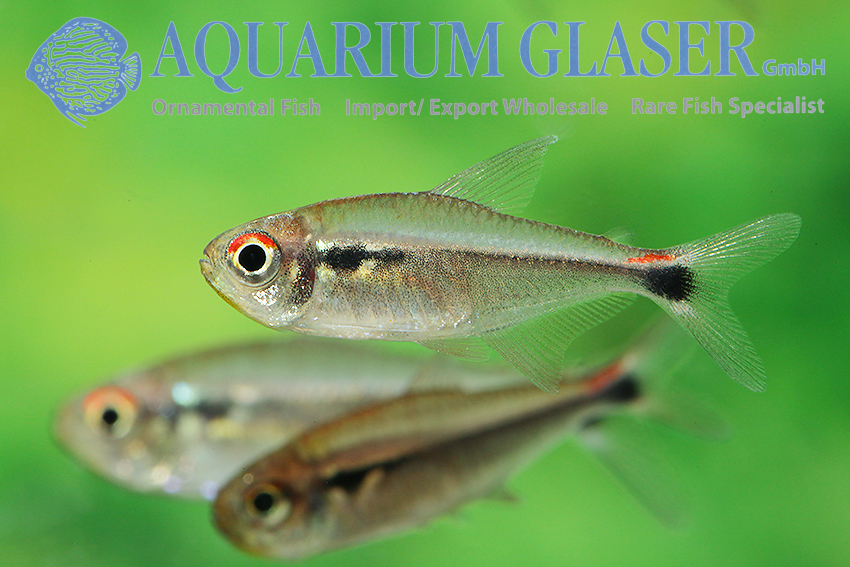
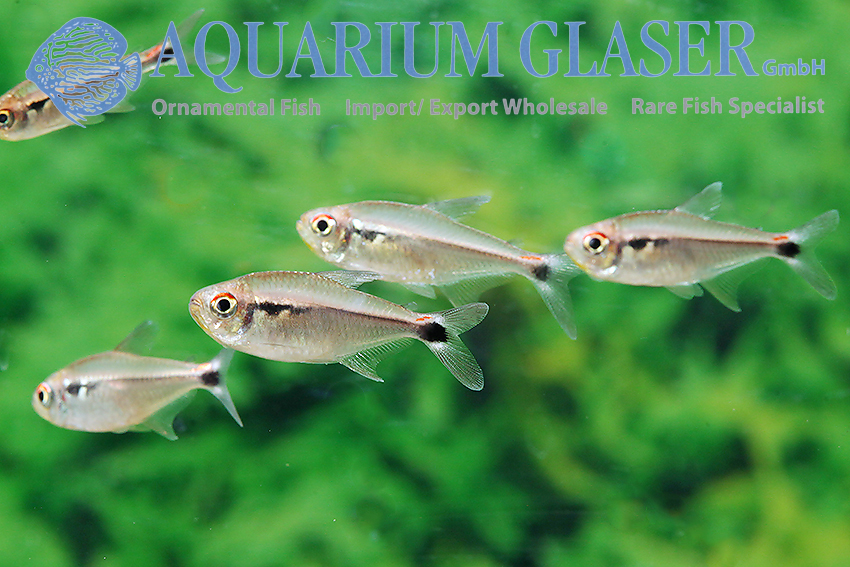
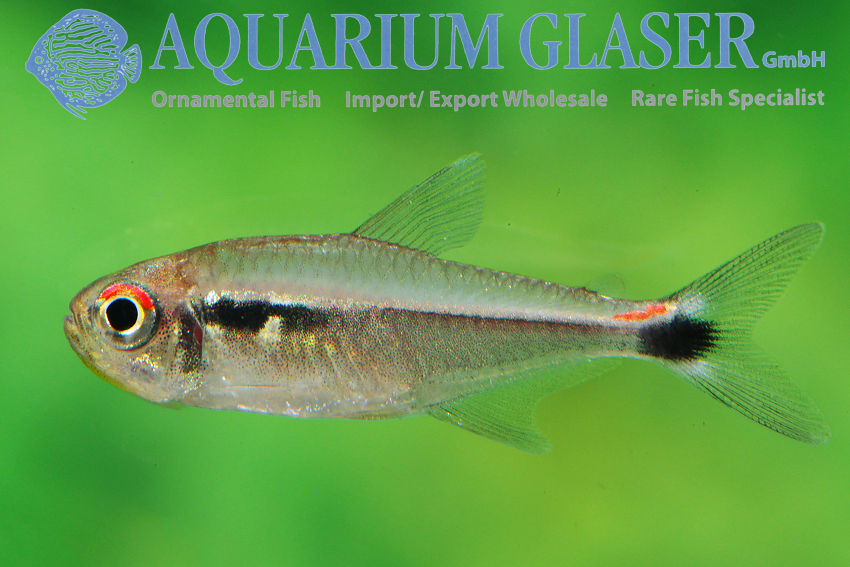
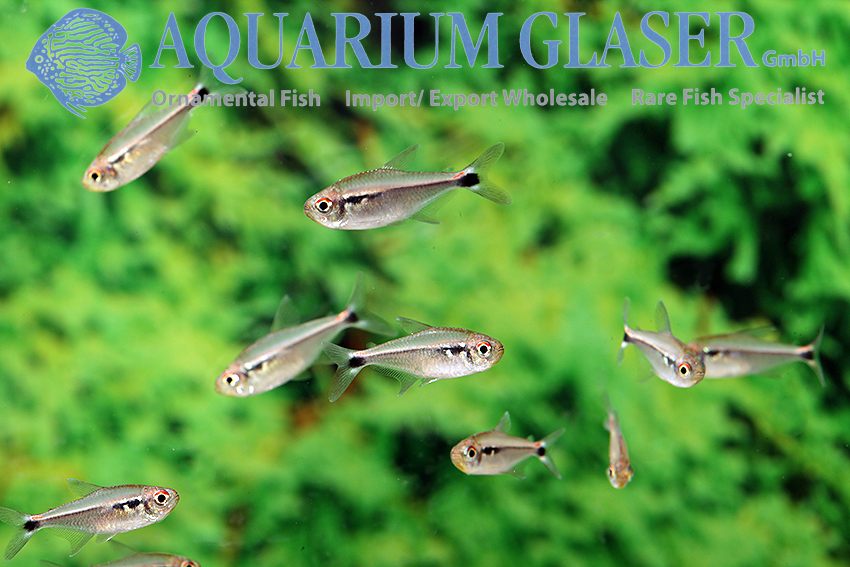
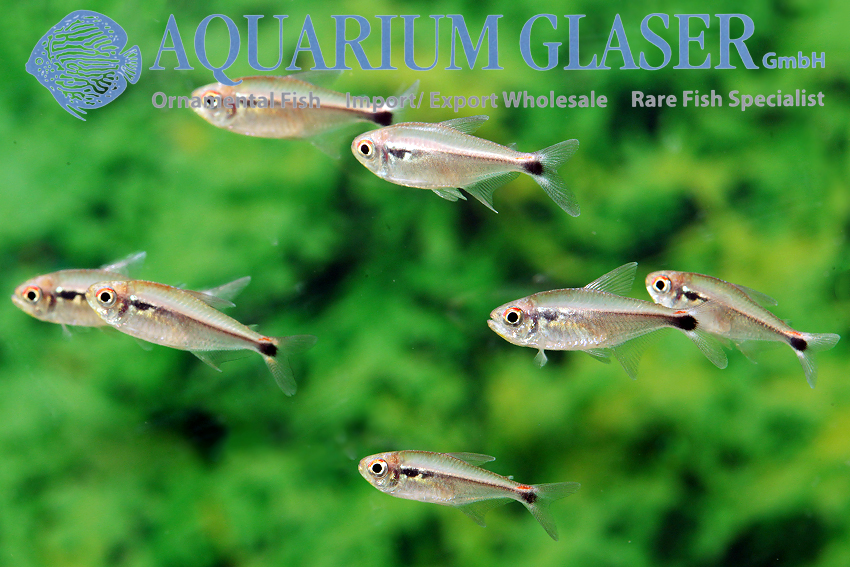
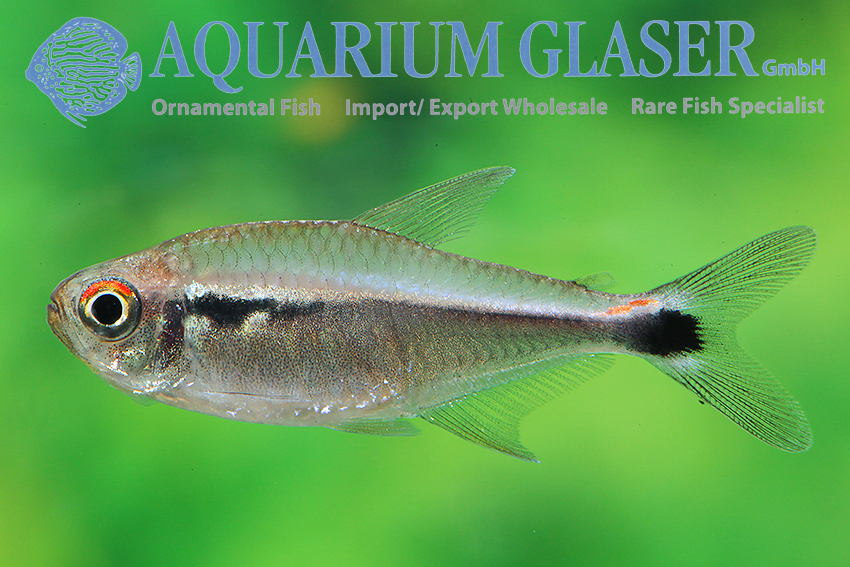
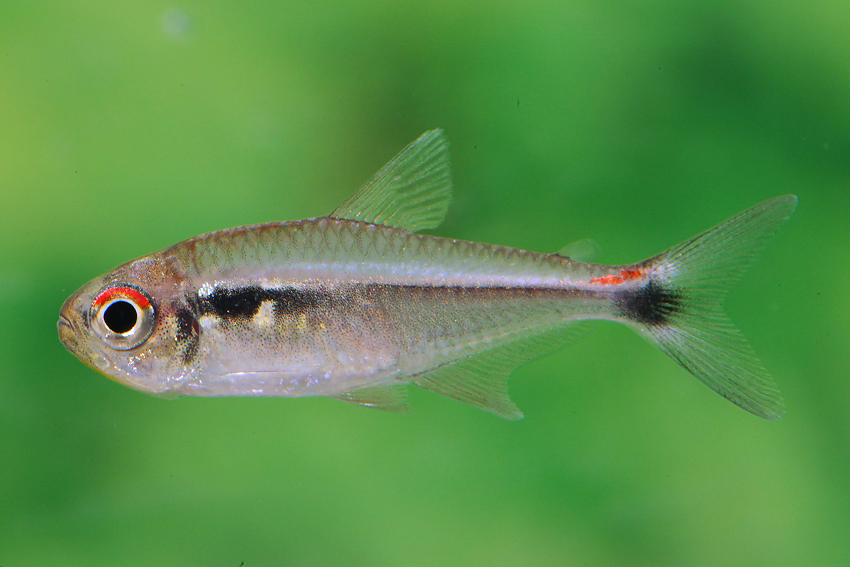
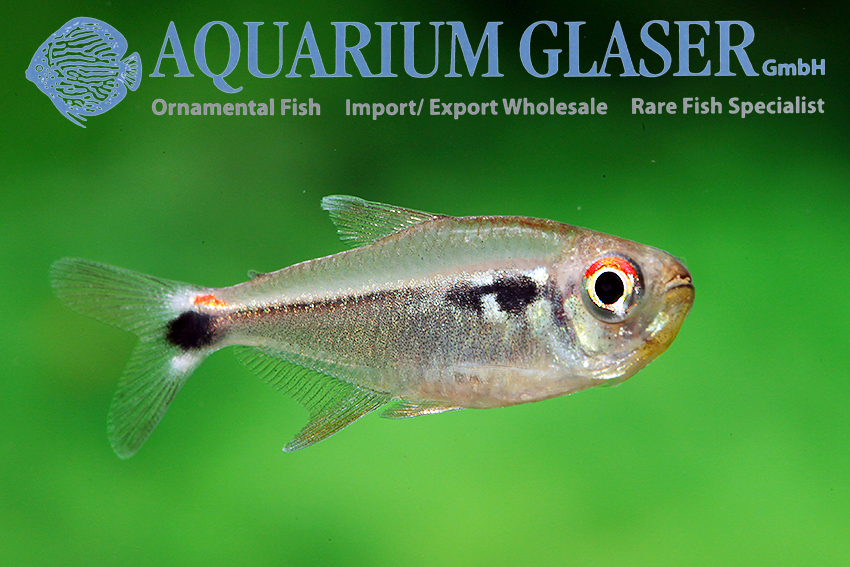
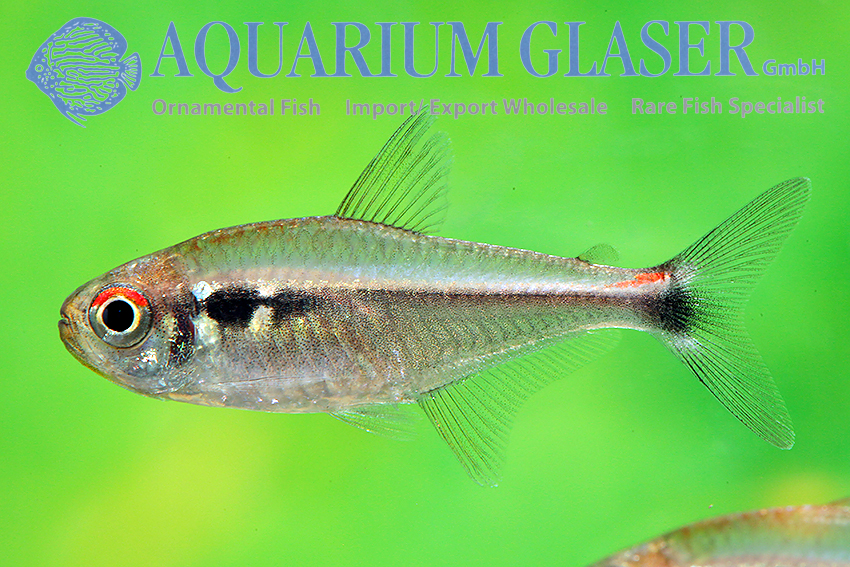
Hyphessobrycon montagi clearly belongs to the Hyphessobrycon heterorhabdus group in terms of coloration, although the red longitudinal band is limited to a short piece on the caudal peduncle. However, this species, which was only scientifically described in 2014, has two species-specific unique features: two humeral spots, which are arranged in a specific way, and an additional caudal root spot. In the most current, DNA-based review of all tetras (Melo et al. 2024), H. montagi is nevertheless placed in the Hyphessobrycon heterorhabdus group. According to current opinion, it includes H. amapaensis, H. cantoi, H. heterorhabdus, H. ericae, H. montagi, H. sateremawe and H. wosiackii. Externally very similar is the Hyphessobrycon agulha group with Hyphessobrycon agulha, H. clavatus, H. eschwartzae, H. herbertaxelrodi, H. klausanni, H. loretoensis, H. lucenorum, H. margitae, H. metae, H. mutabilis, H. peruvianus, H. wadai and H. zoe. However, both groups do not appear to be monophyletic, i.e. their members must be placed in different genera in the long term despite external similarities.
Some of the tetras in the two groups mentioned are aquarium veterans, others have never been kept and bred alive in the aquarium. We now have H. montagi – originally from Brazil: headwaters of the Rio Arapiuns (Rio Branco and Rio Aruã), the lower Rio Tapajós basin and small, direct tributaries of the Rio Amazonas (Igarapé da Ponte) in the state of Pará – available as German offspring for the first time. The animals differ very strikingly in their behavior from the well-known H. heterorhabdus and H. amapaensis. At least our offspring of H. montagi are much more involved in shoaling behavior. Although tetras are generally referred to as “schooling fish”, this is only true to a very limited extent. In reality, most tetra species prefer a certain degree of individuality in everyday life. They only show true shoaling behavior very rarely, namely when they feel threatened. One of the few exceptions are the rummy noses (Petitella bleheri & Co.), which actually always swim in shoals. And Hyphessobrycon montagi are very similar to these animals in their behavior.
The aquarium care of H. montagi is simple and typical of tetras. There are hardly any external differences between the sexes, the females are just slightly more robust. In the wild, females ready to spawn can be found from March to August. The animals live there in clear streams between 0.8 and 20 m wide, clear water with a moderate current, sandy bottoms with accumulations of leaves and at a relatively high water temperature of around 29°C. Adaptability to other water parameters is good, however. The only thing to watch out for is clean, low-germ water. They will eat any ornamental fish food of a suitable size.
For our customers: H. montagi has code 261373 on our stocklist. Please note that we only supply the wholesale trade.
Text & photos: Frank Schäfer
Literature:
Melo, B. F., R. P. Ota, R. C. Benine, F. R. Carvalho, F. C. T. Lima, G. M. T. Mattox, C. S. Souza, T. C. Faria, L. Reia, F. F. Roxo, M. Valdez-Moreno, T. J. Near & C. Oliveira (2024): Phylogenomics of Characidae, a hyper-diverse Neotropical freshwater fish lineage, with a phylogenetic classification including four families (Teleostei: Characiformes). Zoological Journal of the Linnean Society v. 202 (no. 1): zlae101: 1-37




